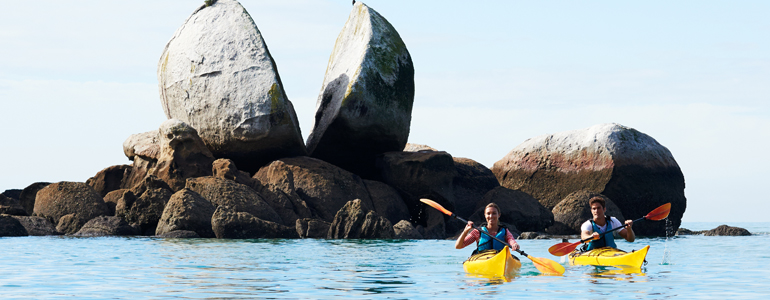Measuring success
Successful destinations regularly revise and re-engineer their plans and structures according to the changing visitor needs and economic influences.
On this page
It is important to know what success in your destination would look like, based on your vision, strategic imperatives, goals and focus areas.
Measuring the indicators of sustainable tourism incorporates the four well-beings of social, economic, environmental and cultural, and encourages going beyond the traditional metrics of visitor volumes, nights and expenditure. Measuring visitor and community satisfaction though sentiment indexes or net promoter scores is also becoming more common.
Benchmarking your destination against others, both within New Zealand and internationally, can provide opportunities to assess how well you are performing and provide new ideas, approaches and learning.

Fraser Clements, Abel Tasman
“How can we fundamentally leave our place better than we found it? That’s not a concept that we can own; it comes from our Indigenous Māori people. They have a beautiful way of viewing the world and doing business. What we’re trying to achieve with this plan isn’t our thinking.
It’s very much a return or an elevation of Māori thinking and values. The whole point is to leave the place better for future generations, and that means going further than sustainability. That’s where we started to uncover regeneration, and now we’re really passionate about this concept.”
Kristin Dunne, CEO, Tourism Bay of Plenty
Ask
- Are our key performance indicators aligned with our vision, strategic imperatives, goals and focus areas?
- Do our success measures match the community’s aspirations and expectations?
- Do we monitor and report on visitor, community and industry feedback and satisfaction? Do the findings influence our planning and development activities?
- Are we monitoring and managing tourism’s effects on the environment and community (at the destination, organisation and enterprise levels)?
- Are we benchmarking our destination against others?
- Are we regularly revising and reviewing our plans and structures to remain fit for purpose?
- Are we sharing/communicating our monitoring and evaluation data with the local sector, community and national groups, to support continuous improvement?
- How are we monitoring community satisfaction/sentiment about visitors and the tourism sector?

